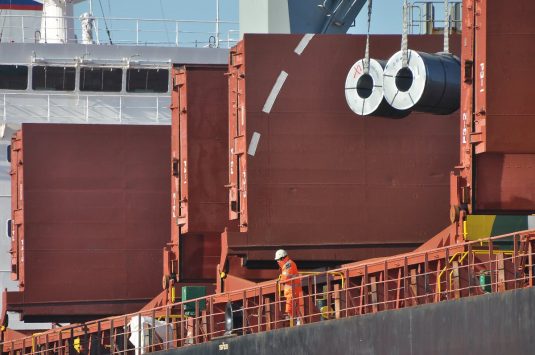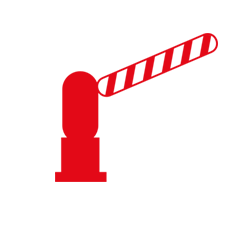- Traffic rises 4.4% in first half of year due to liquid bulks recovery, especially gas and gas-oil, and increase in general cargo due to iron and steel growth.
- Special loads continue on the up, increasing nearly 9%.
- Construction of new dock owing to demand for port land and warehouse for logistics-industrial activities main Port Authority investment.
- Haizea Wind, Gamesa, Progeco and Toro y Betolaza request lands for new strategic projects.
Between the months of January and June, some 15.9 million tonnes were handled by the Port of Bilbao facilities, which represents a 4.14% increase over the same period for last year (+631,989 tonnes).
Liquid bulks increased 5.1% due to growth in gas-oil, natural gas and fuel oil, while crude oil and petrol dropped because of the longest technical closure in the history of the Petronor Refinery in the early months of the year.
Solid bulks remained at practically the same levels as last year, showing a slight 1.26% decrease. Of the main goods in this category, the increase in gravel and sand, soy beans and scrap iron exports stand out, as does the fall in sulphates, petroleum coke and coal.
General cargo, which is what most added value has for the Port community, increased by 190,000 tonnes, representing nearly 5% growth. On the one hand, conventional general cargo accumulates a very positive result with a 16% increase thanks to a greater movement of iron and steel products and in wheeled traffic.
General container traffic, on the other, recovered in spite of a slight 0.64% loss. This has been the traffic most affected by the dockers’ strike in June, with the loss of six calls and goods being transferred to road transport. This additional rotation loss meant 42 fewer container vessels in this half year, although to some extent this was offset by the almost 21%-increase in the size of the container vessels, thus following the gradual tendency in search of economies of scale.

Measured in TEUS, the number of containers handled went down by 1.8% because of the increase in the average tonnage loaded in the containers. There was a notable increase in iron and steel and chemical products among the main goods transported in this mode.
The number of vessels is similar to that of last year, increasing by just five units, although average size increased by 3.8%.
Regular line passengers went up by 5%, while the number of cruise tourists fell by 11% as a result of the arrival of two cruise vessels fewer than in the same period in 2016, although the year will close with a higher increase than in the previous year.
Heavy load (special projects) traffic continued to rise and stood at 2,699, an increase of 8.7% over the same period last year.
Port-rail traffic went down by 3.8% as it is conditioned by container traffic.
With regard to markets, the European Atlantic is the origin or destination of 39% of traffic, followed by the North American Atlantic in second place and the African Atlantic in third.
By countries, United Kingdom, Mexico, Russia and the United States head the classification, while United Kingdom, Brazil, Nigeria and Turkey grew most in absolute terms.

 Port access
Port access